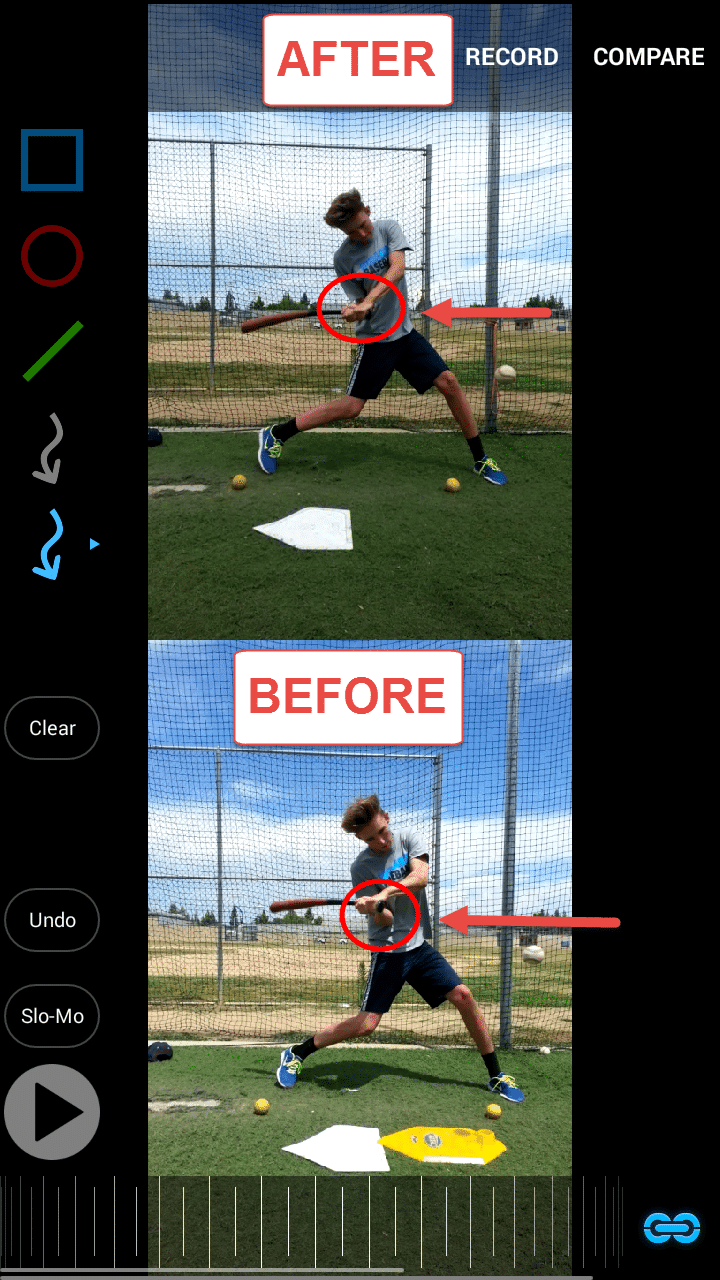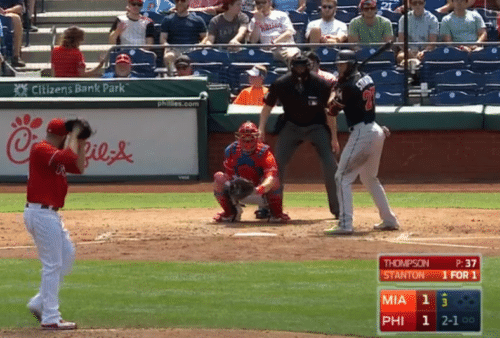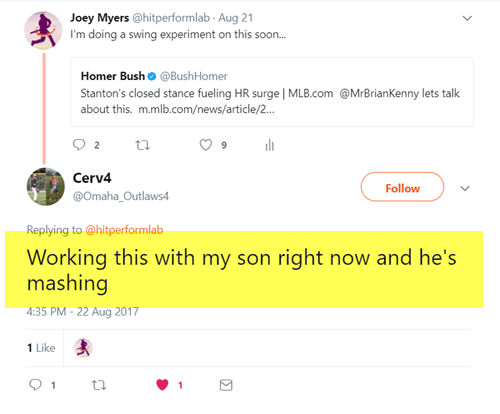Learn if there are different types of rotational vs linear baseball, softball, and slow pitch swing mechanics. Discover hitting drills and trunk strength exercise benefits.
Rotational Linear Hitting Mechanics: Get Rid of Old Tired Hitting Dogmas Once and For All

Isn’t this diagram showing proper bat path? Both are linear!! This is part of the confusion that’s out there on the net. Diagram courtesy: BackBackBack.com
A rotational linear hitting mechanics reader question came in recently that relates well to both baseball and softball…
“What is the best to teach a rotational swing or a linear swing?”
Here’s what we’ll cover in this rotational linear hitting mechanics post:
- Swing is both…and then some,
- Conservation of Linear v. Angular Momentum,
- Planes of Motion, and
- Centripetal v. Centrifugal…
SCIENCE-BASED TRAINING:
Improve your hitting strategy dramatically by applying human movement principles.
Learn not only how and what to train but also the science behind the methods.
Swing is Both…and then Some
Even when I was wrongly teaching my hitters to ‘swing down on the ball’, I had a gut feeling rotational linear hitting mechanics were a little of both. It didn’t make sense to say it was one or the other. If you find yourself thinking this, then you have an incomplete understanding of dynamic human movement.
My advice? Get educated. Do your homework. Test. Re-test. With today’s access to quality information, experts, and sophisticated technology, there’s ZERO room for ‘willfully ignorant’ hitting theories. If you aren’t growing, you’re dying. Us coaches MUST hold ourselves to a better teaching standard. Standards that go beyond hitting absolutes, which aren’t wrong – but incomplete.
We MUST apply human movement principles, that are validated by science, to hitting a ball. Another word for ‘principles’ are “rules” or “guidelines”. Think of these principles as bumpers at a bowling alley keeping the ball from plopping into the gutter. What path the bowling ball takes between the bumpers doesn’t matter, just as long as it stays between them. Hitting absolutes are what goes on between the bumpers.
You following me? Human movement principles first. And how they’re applied (think video analysis) comes second. If it’s the other way around, then we’ll have hitters burying their chins into their chests like Andrew McCutchen (see image below)…
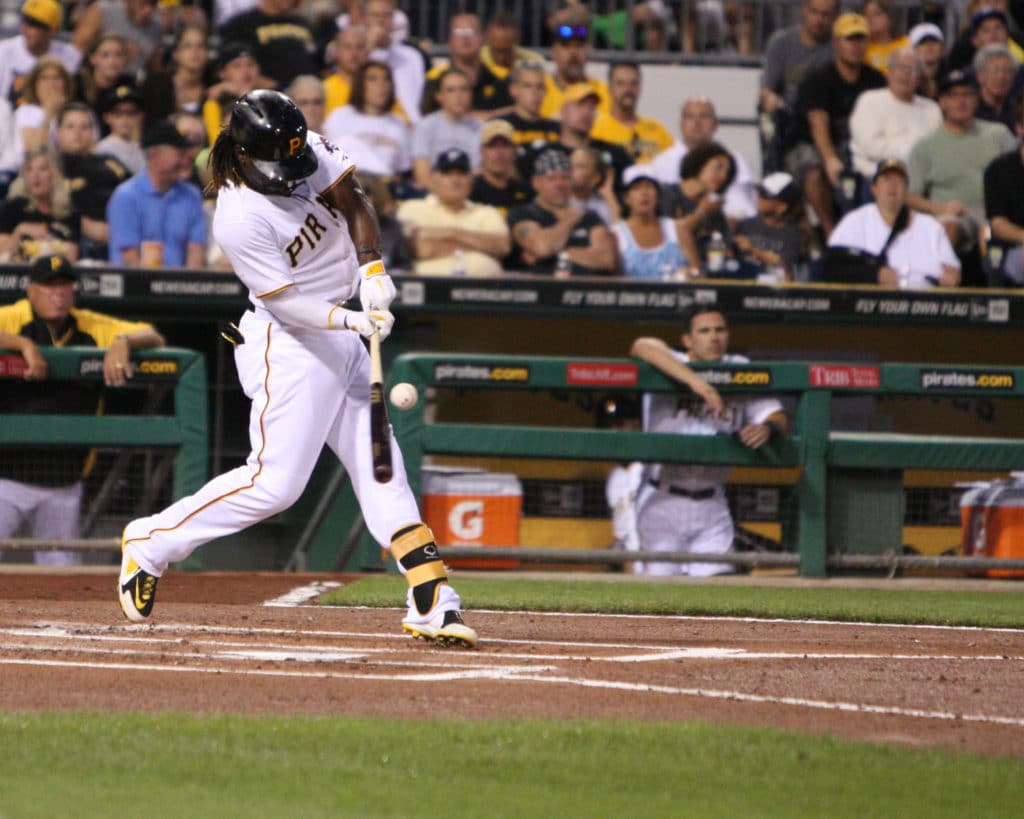
Image courtesy: http://12075-presscdn-0-91.pagely.netdna-cdn.com/
Many of you will see this ‘chin to chest’ image and won’t find anything wrong with it, “he’s keeping his head down at impact,” you’ll say. I’m afraid Cutch is succeeding despite this ineffective mechanic, NOT because of it.
See WHY breaking the ‘One-Joint Rule’ bleeds force at impact by CLICKING HERE.
…Or closing the gap between their rear ear and shoulder like Derek Jeter or Bryce Harper during the turn, which is a blatant breaking of the One-Joint Rule (see image below)…

Photo courtesy: http://districtondeck.com/
Again, Bryce Harper is succeeding despite this ineffective mechanic, NOT because of it. In the corrective fitness world, we say ‘shoulders are ear poison’ to maximizing force and reducing the probability of injury. So, what did I mean in the sub-title above “…and Then Some”?
That I’ll answer under the Centripetal v. Centrifugal Forces subtitle below. Let’s get started fleshing out rotational linear hitting mechanics…
Conservation of Linear v. Angular Momentum
There are a couple great Circus Physics resources from the Public Broadcasting System (PBS) website on these two concepts (each have 2-min videos):
- Conservation of Linear Momentum, and
- Conservation of Angular Momentum (turning).
To prove the swing is both of these, watch a clip of Albert Pujols a wide-no stride swing, when he was with the Cardinals, which most purely rotational people point to as a good example of their ‘hitting theory’:
Like golf, you see his pelvis slide forward before he starts turning. This is a linear move, and I call it shifting foot pressure.
His weight goes from the outside of his back foot, inside front foot…then as his pelvis shifts forward, you’ll see his weight go to the inside of his back foot, outside of front foot.
Shifting foot pressure is what I would teach my fastpitch hitters because of their compressed reaction time, similar to these Lauren Chamberlain swings:
Also note, Pujols and Chamberlain ARE NOT ‘squishing the bug’ with their back foot, another thing purely rotational ‘hitting theorists’ cling to.
Look at this more recent clip of Pujols with the Angels. Here he employs a traditional linear stride:
Now, Ichiro Suzuki is who the purely linear ‘hitting theorists’ point to as a great example of their system. Watch this video:
You’ll see a little more linear elements to Ichiro’s swing (forward momentum and hand path), but he still starts sideways, and rotates, or turns, the center of his chest to impact. Did you catch the keywords “rotates” or “turns”?!
Show me one hitter in the Big Leagues or Professional Fastpitch that ONLY have a linear swing…or ONLY have a rotational swing.
I guarantee you won’t find ONE.
At ANY level, I GUARANTEE you won’t find ONE baseball or softball hitter, PERIOD, that does either one or the other!!
Are you getting the rotational linear hitting mechanics idea?
Planes of Motion
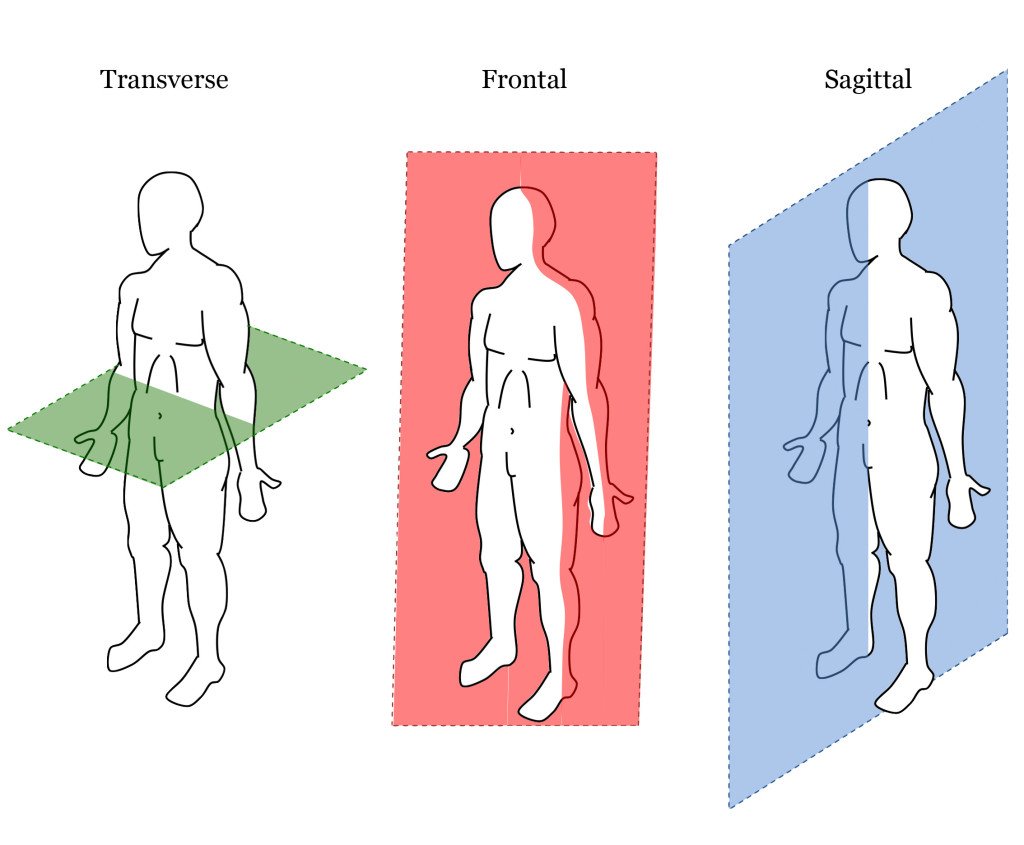
Planes of Motion photo courtesy: goldsgymwebsterny.wordpress.com
I did this post titled Baseball Hitting Mechanics for Youth: Straight Landing Front Leg OR Bent?
Benefit #6 in that post I sub-titled, “How Humans Change Direction & Planes of Motion”.
Under the sub-title, I talk about three main planes of motion that we move in:
- Front to back (Sagittal),
- Side to side (Frontal), and
- Twisting (Transverse)…
Also, I included a YouTube video of NFL wide receivers running ‘Tree Routes’.
A wide receiver running a cut route will use the 1) Front to back plane first, then when he makes his 90-degree cut, will momentarily move onto the 2) Side to side plane before getting back on and accelerating in the front to back plane.
A hitter starts off moving on the 2) Side to side plane, but as they start turning get on the 3) Twisting plane.
In order to understand rotational linear hitting mechanics clearly, we must consider putting aside our egos, and truly look at what’s going on in video analysis.
Again, principles first, application second.
Be honest.
Like few coaches that find me on social media…DO NOT fall into the same ‘willfully ignorant’ trap they do.
If you AIN’T growing, then you’re DYING.
Know this about hitters…
There is almost always some form of linear (forward) movement that precedes the twisting. I call it getting a head start before making an explosive rotational move.
Both Pujols, Chamberlain, and Ichiro do this.
But THESE ARE THE FACTS…
The path of the bowling bowling ball down the lane may be different, but ALL three stay within the ‘bowling bumpers’.
Centripetal v. Centrifugal
Here’s a great video from YouTuber SciShow about the difference between Centripetal & Centrifugal Forces:
Centripetal Forces are ‘center-seeking’ and Centrifugal Forces are ‘center-fleeing’.
Here’s how the rotational linear hitting mechanics purist stack up with these two forces:
- Purely rotational side with Centripetal Forces, and
- Purely linear side with Centrifugal Forces…
But clearly the swing is a combination of both…and then some!
I actually say the swing is:
- Linear at Start – hitter getting a head start before stride landing, or second phase of shifting foot pressure,
- Rotational – hitter transfers forward into angular momentum to get barrel into the impact zone, and then
- Linear AGAIN – after impact the hitter chases the ball with the barrel.
The last part is crucial to consistency, and is a good example of Centrifugal Force.
When talking about rotational linear hitting mechanics, I also give the swinging rock-on-a-string example in the main video above.
You see, first the hitter uses Centripetal Force to turn the barrel into the zone sideways…the turn is meant to be quick and compact from an Angular Momentum standpoint (Keeping a slight bend in the front elbow, NOT from swinging down, being short, etc.), until the barrel gets on the plane of the pitch.
Then the hitter either lets the front arm lengthen or stay shortened depending on timing and pitch location, but make no mistake…
Elite hitters will keep their barrel chasing the ball after impact, until both arms get fully extended…whereby the barrel then circles around the body during follow through.
So is it better to teach rotational liner hitting mechanics?
Yes.
As long as it’s a blend of the two.
Not one or the other.
Let human movement principles be your guide.
The path the bowling ball takes in the lane doesn’t matter, just as long as it stays between the bumpers.



